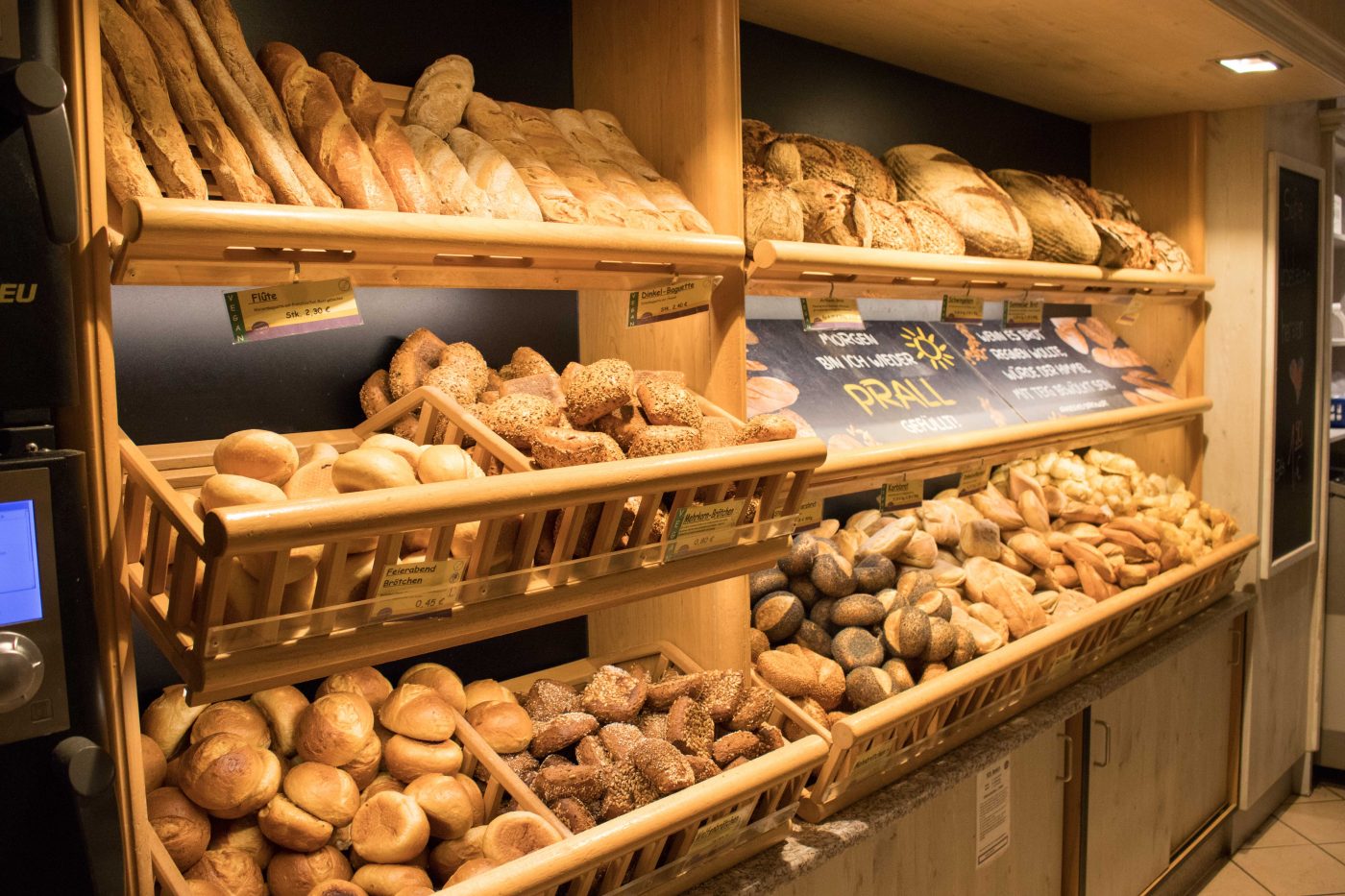
Slow Baking at the bread sommelier
March 2nd, 2019 | on the road
Bread is the staple food number 1 in Germany, over 3,200 different types of bread are supposed to exist. Bread is literally on everyone’s lips – but hardly anyone knows what it looks like in a bakery and how much time and effort is in a good bread – let alone what a bread sommelier and slow baking is. To find out, we were a guest at Wolfgang Heyderich’s in the Stader Backstube.

When we arrive at the Stader bakery at 3 o’clock in the morning, tons of bread, croissants and bread rolls are already baked. Not for late risers, the bakery trade… dough maker and senior journeyman Gerhard Wöltjen has been on site since one o’clock in the morning. His working day will end with breaks around ten or eleven am: “When everything is ready,” he says. Wöltjen can look back on 40 years of baking experience and is currently weighing the ingredients for rye bread. He shows us the so-called “dough control system” he uses. “A display is connected to the scale, exact work schedules for the respective bread or roll dough are saved. The display shows which ingredients and what quantities I have to add,” he explains. “That relieves the baker a lot, you can hardly forget an ingredient.”


48 hours to the finished bread roll
In the bakery we meet Wolfgang Heyderich and a mixture of tradition and technology, of manual work and high-tech. The baking and rest times are computer controlled. Nothing is left to chance. The bakery was certified with the “Slow Baking” seal as the 11th company in 2006. According to the “Slow Baking” philosophy, the doughs are allowed to rest and mature for up to 48 hours, and sometimes even longer. “The dough is started, then electrically cooled down, so that the flavors can develop optimally,” explains Heyderich. “Then the temperature is raised again very slowly and cooled again, which gives a nice crisp crust – finally, the next morning we can bake. Everything depends on the right dough proving.”

Dough proving means – in simple terms – how the dough is processed. And there are huge differences! Wolfang Heyderich explains it this way: “Traditional methods pay attention to natural and gentle practices. The time factor plays a very important role! Anything that can mature in peace and under optimal conditions will be great in the end. Fast, time-optimized additives that are adapted to the technology, for example to ensure the machinability of doughs, have no place in our company. Slow Baking is our top priority. ”
Time and “good proving” for the taste, that’s the way it should be!

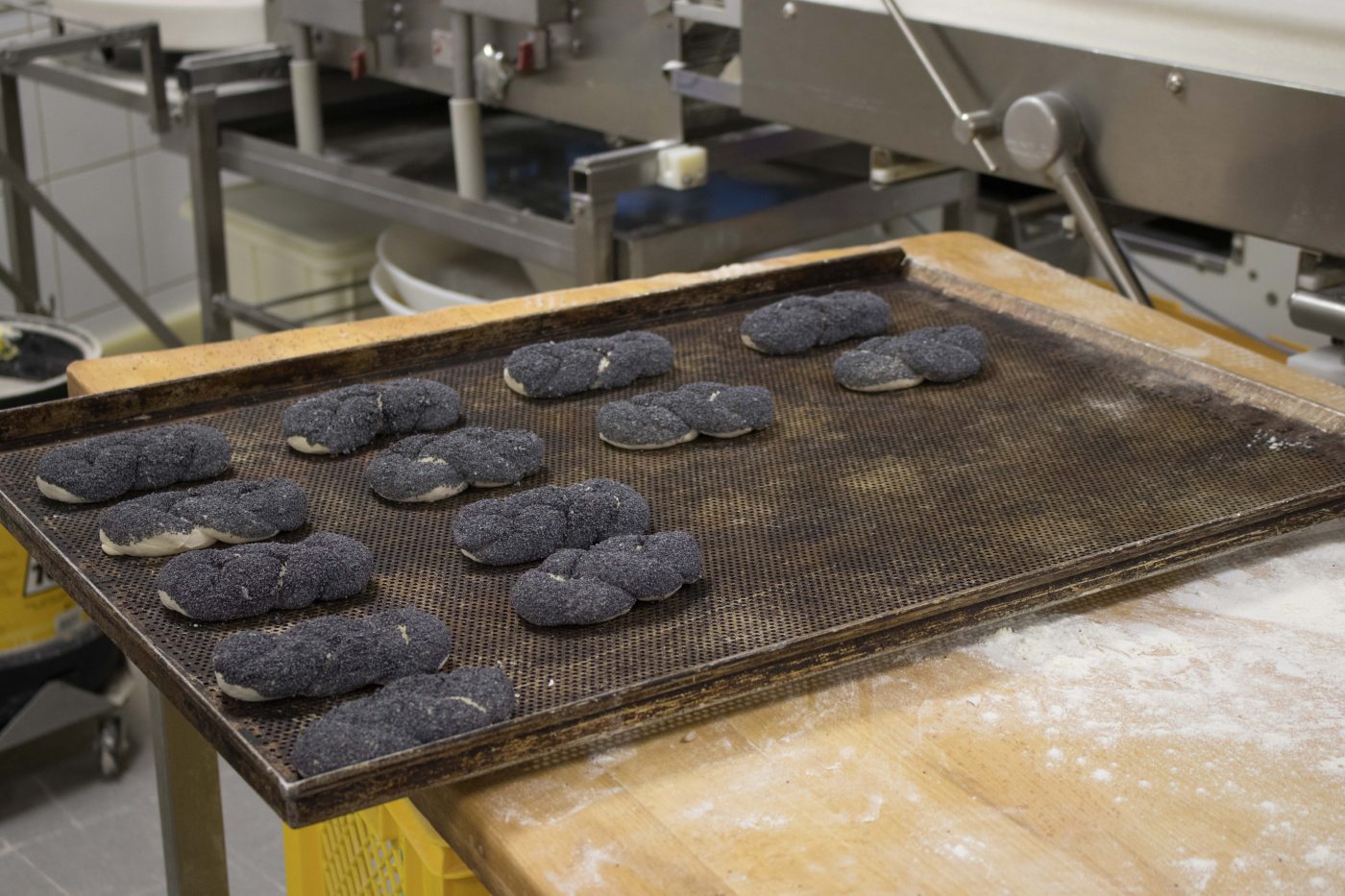
How to become a bread sommelier?
When Wolfang Heyderich passed the examination for bread sommelier at the beginning of 2018, there were just 44 of them in Germany. The additional training lasts ten months and is above the master’s certificate.
In eight modules of three days each at the German National Bakers’ Academy in Weinheim, it’s less about practical baking than about bread culture and the history of bread. In addition to business administration and marketing/communication, the sensory abilities of the participants are primarily trained. The topic of food pairing is also an important field of action. Which bread suits which dish? We know this in respect of wine, but it’s new to me when it comes to bread – but in the end just as obvious.



To describe taste and smell is generally not easy. That we also know from wine. And when I’m touted a wine with the words “A flavor and expression like the sunlit pebble stones of a creek”, then I admittedly quickly reach my limits. A little bit I had the fear, it could go in this direction even with Wolfgang Heyderich. But no. Of course, he can philosophize about bread and he can describe, rate, assign bread. But he does that completely calmly and unobtrusively. He does not tell any flowery and wordy stories. In his calm and sympathetic way he describes the different types of bread in a more objective way, perhaps with a little north German approach. His attempts to give the right bread to certain foods are fascinating!
At five am the first customer arrives!
The bakery and café on Harsefelder Strasse in Stade are open seven days a week for incredible 365 days a year. From 5 o’clock in the morning, the customer stream does not tear off. Outside the bakery, meanwhile, the wood burning stove is heated, which is in operation every Saturday – in addition to the three large ovens in the bakery. Lord of all ovens is Daniel Nitschke, who routinely ensures that bread and rolls are nice and crunchy and brown.
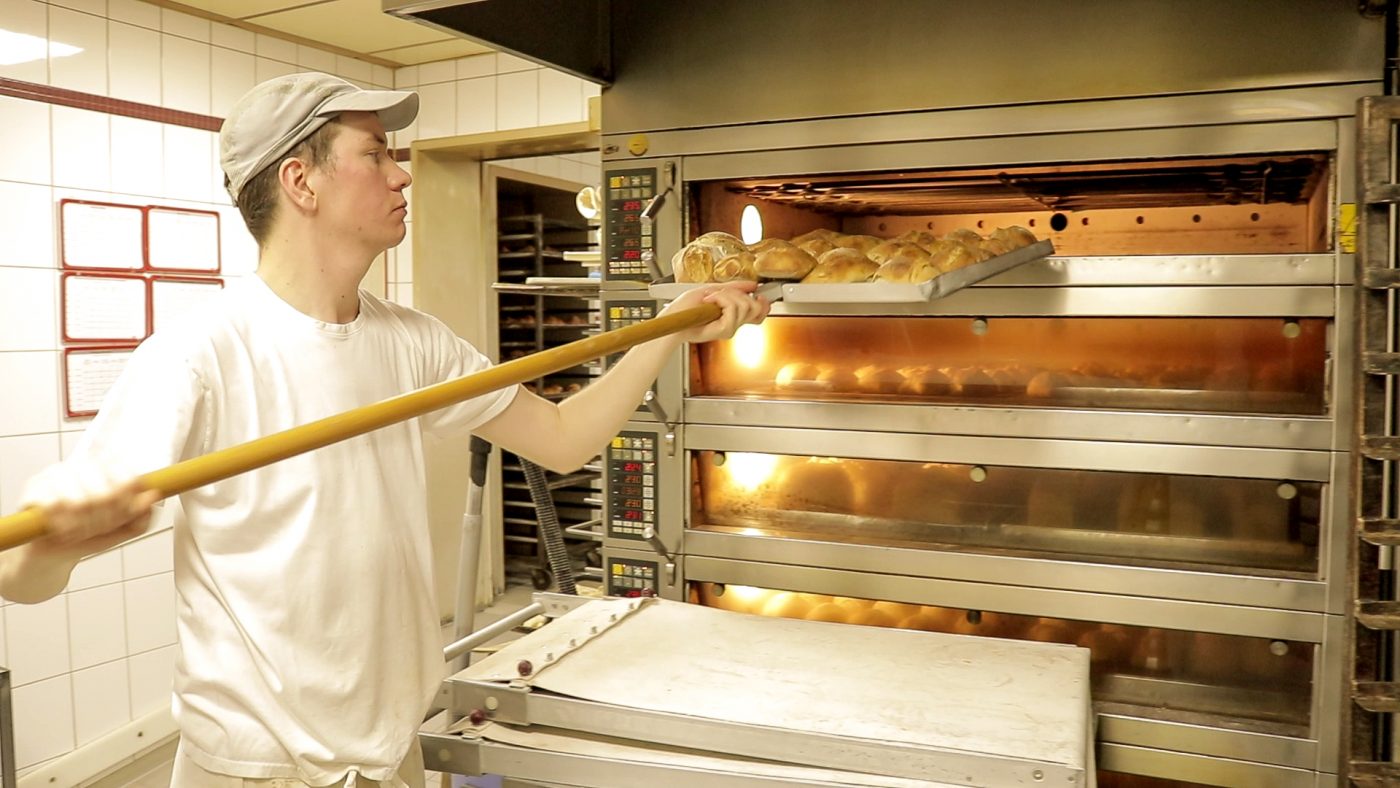

My focus is on a bread that is almost as big as a cartwheel and just is sold. Heyderich explains to me: “This is our sommelier bread! The trend is towards smaller breads these days, though big breads are more aromatic and crusting is just better.” And the sommelier bread is a big loaf, a huge one. The customer determines the size of the piece he buys.

The sommelier bread is made from Swiss Ruchmehl. Ruchmehl contains a greater proportion of the outer shell layer, while conventional white flour consists mainly of the inner parts of the grains. The giant loaves are pre-baked, packed in foil bags, so that moisture penetrates back into the bread. This interruption of the baking process and moistening make the crust even crisper. “Around 80% of the aromas are in the crust,” says Heyderich. He likes to talk about the “aroma safe”. Anyone who once had his sommelier bread under the bread knife knows what he means.
Donuts - still made by hand
In the Stader bakery, manual work is omnipresent despite state-of-the-art technology. As an example, confectioner Marco Musall bakes 120 donuts this morning. The dough pieces are added by hand to the hot fat. Three minutes from one side, then turned by hand with two wooden sticks, another three minutes from the other side, and once again for two minutes each side. Then they are filled by hand, coated by hand with liquid mirabelle jam (so that later the glaze shines beautifully, or the icing sugar holds well), then glazed by hand or dusted with powdered sugar…




In the night of 30th to 31st December, 4,000 (!) donuts are made at the Stader bakery every year. But that is a matter for the boss. Heyderich wants to avoid that his employees burn themselves in the rush or that a donut stays unfilled by accident. That would not be a good omen for the customer on New Year’s Eve.
Only the best ingredients
Heyderich swears on regional products, he does not want to burden the environment with long transport routes. The flour he gets from the mill “Venti Amica”, a historic Dutch gallery windmill in Hollern-Twielenfleth. Only with the sommelier bread and with the Flûte he makes an exception. The flour for the thin French white bread sticks comes from France. Heyderich explains: “Sometimes it needs a very special flour for a very special taste.”
In the confectionery only butter (from the dairy Hasenfleet) is used, no margarine; only marzipan and no persipan and even the jams and fillings are cooked by themselves. But it is not just the good ingredients that make up the unique taste of the Stader bakery products, but also the ingredients that just do not get in: industrial bakery products, baking mixes or pre-made dough pieces do not exist in this bakery.
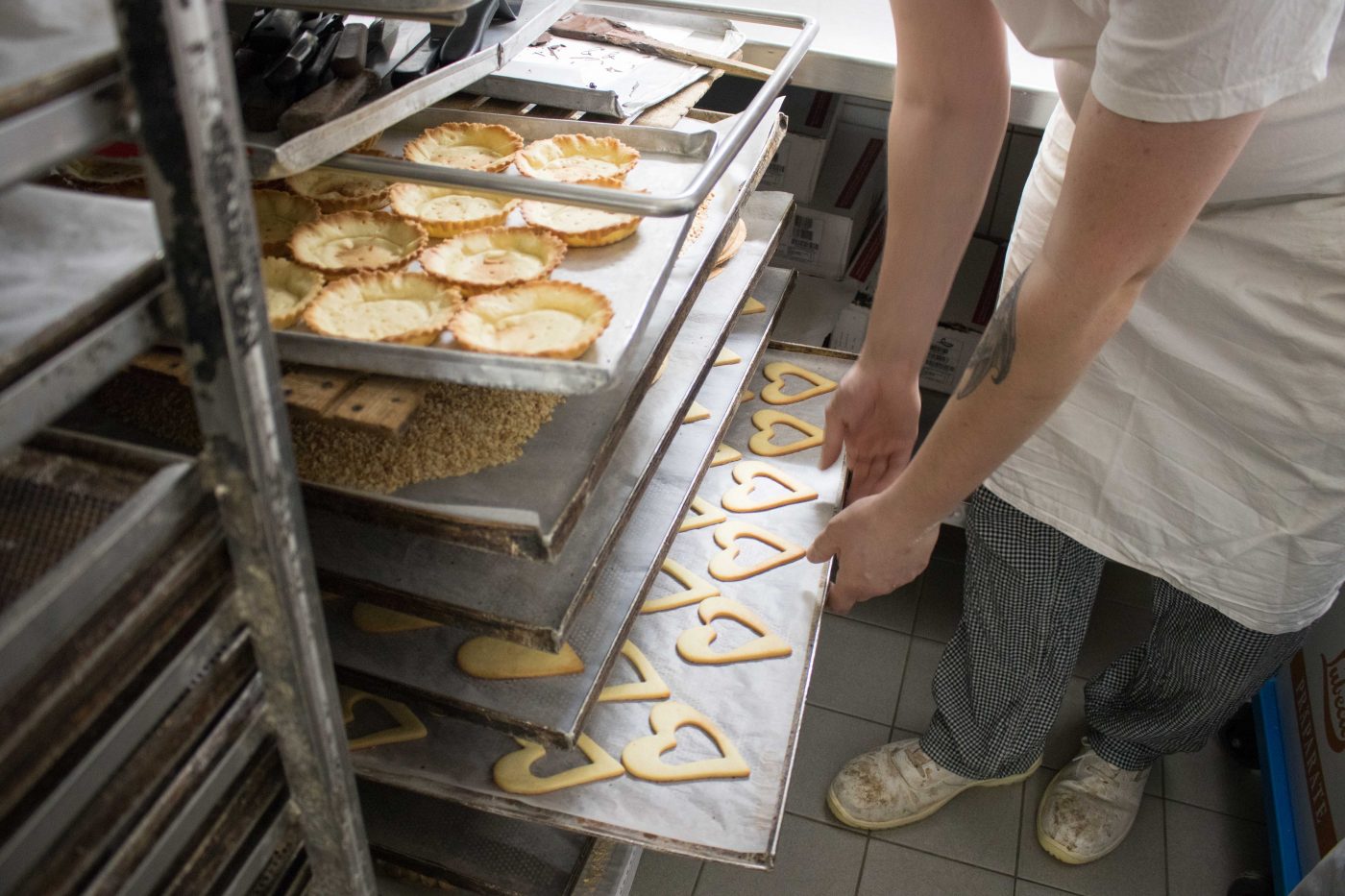

By training to become a bread sommelier Heyderich has developed even more understanding of bread. His father still “baked out of the sack”, what means industrial baking mixtures. That’s out of the question for Heyderich. When the pastry chef took over his parents’ business together with his wife Monika in 1995, he changed it to “Slow Baking” and banned all artificial baking from his bakery.
Quality versus expansion
And the future? Are Heyderich’s signs of growth? No, it should remain family, two branches are enough. Further branches, for example in Buxtehude or elsewhere, would again be connected with unnecessary transport routes, the Heyderich family does not want that: “Our philosophy is to put quality and the love of craftsmanship over expansion. We want to stay small.” And admittedly, if you look at the number of branches of other bakeries in the district with 200 or even 400 individual branches, you can hardly speak of craftmanship. It’s rather an industrial bread production.
And indeed, the bakery Heyderich is also the only one who still operates their bakery in the city of Stade. There are only a few “hot bakeries” left, but many are cold ones. That is to say, there is a bakery where nothing is produced any longer, and in front there is a sales room, which is supplied centrally. Anyhow, there is still a bakery sign hanging at the door.
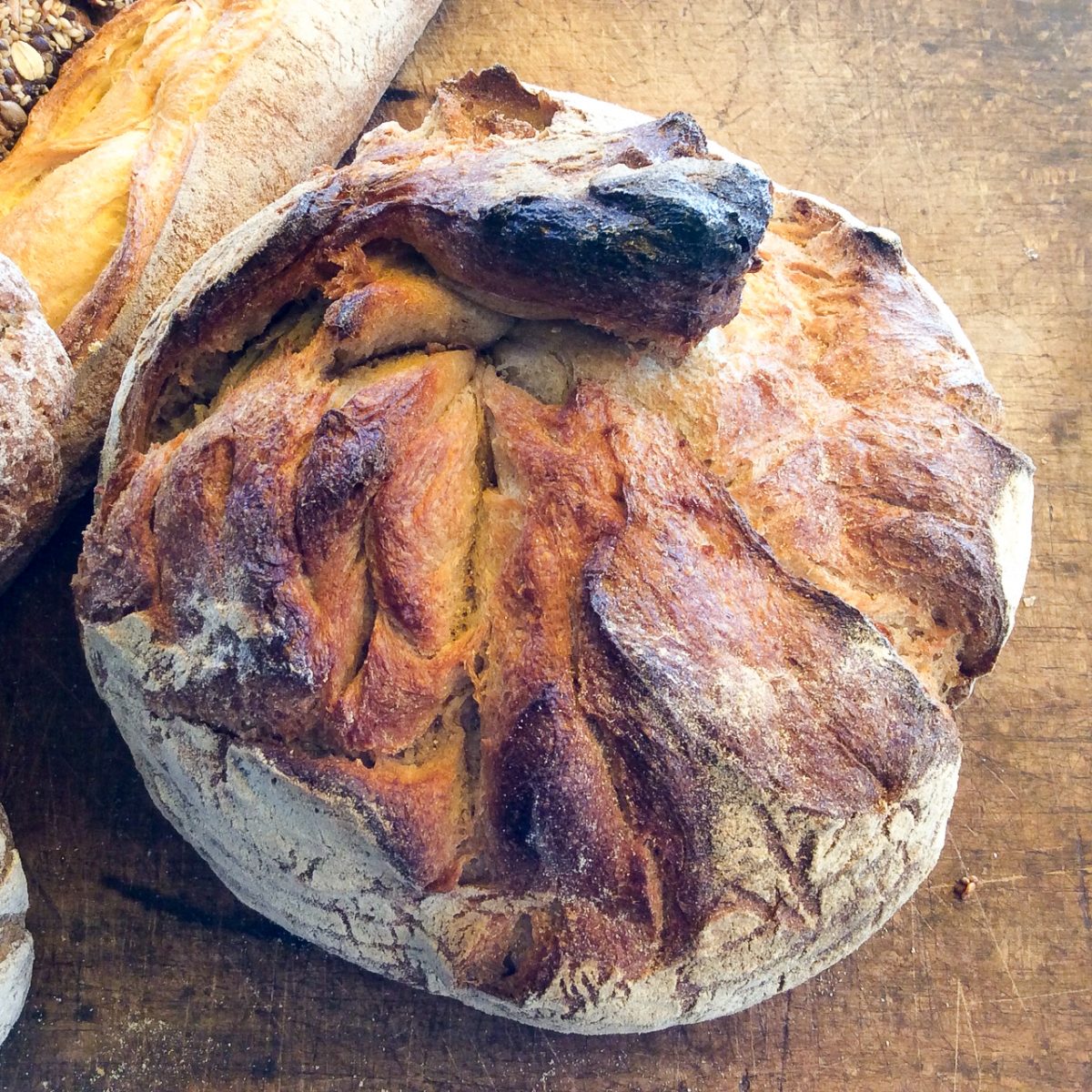
At 6:30 am we leave the bakery with half a sommelier bread under our arm and a bulging bag of bread rolls. The car is quickly filled with the seductive bread fragrance, we look forward to a breakfast and are a bit tired. Getting up early does not run in our blood. The more we realize that night after night people in the bakeries ensure that we have our “daily bread” on our table. With the knowledge of a good dough proving and the time, which a good bread needs, we will enjoy bread more consciously in the future. Bread is more than a “base” for a slice of sausage or cheese, that’s what we have learned.
Leave me a message
Fish market? No, homie, „FrischeParadies“ [paradise of freshness]!
Thirty years ago you could buy super fresh fish directly at the fish market in Hamburg. Today, only a handful of cutters are pinning at the pontoon of the fish auction hall. So where do the Hamburg people buy fish today, especially if they don‘t want to get up Sunday morning at 4 o’clock? I swear on FrischeParadies. Nowhere else in Hamburg you’ll find such a well-stocked and wonderfully presented fish display as in FrischeParadies. And where do you find this paradise for foodies? Of course, in the Große Elbstraße [Great Elbe Street]. Where else.
read moreSummer salad at its finest
It must be a light dinner on hot summer days. And it has to be done quickly. Who wants to spend hours in the kitchen? A salad is just right here: a bit of mixing, a bit of snipping, dinner is ready: tomato, mozzarella, mango and Thai basil, there is enough time for a relaxing evening on the terrace.
read moreGin & Calamansi from the Philippines
A small bottle of gin, brought by a very, very dear colleague on board set this story in motion: The petite Filipino lady handed my dearest captain a farewell bottle of Philippine gin. “We’ll drink it in the Philippines with calamansi fruit, never with lemon, Captain!”, she said with a smile.
read more

